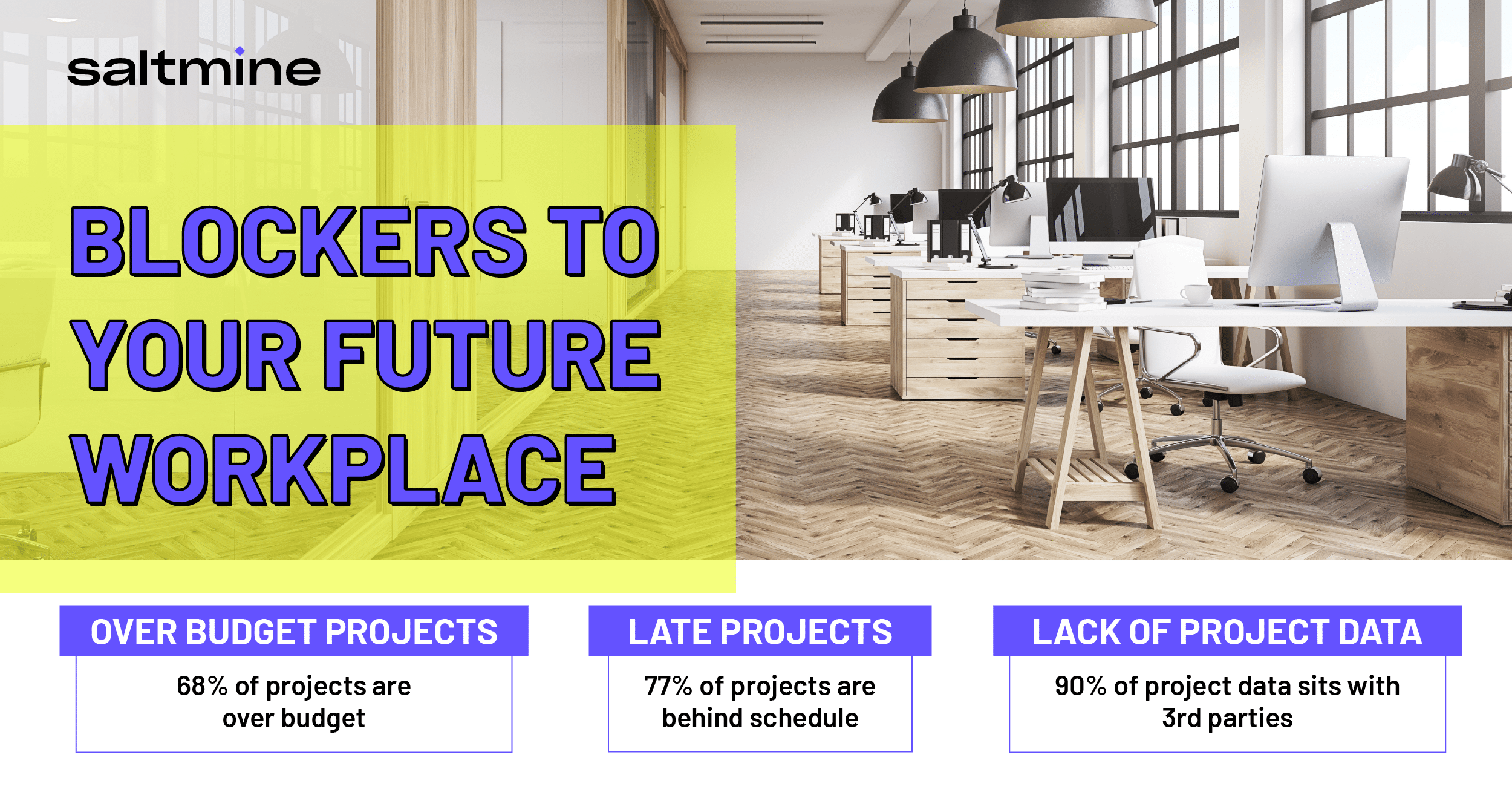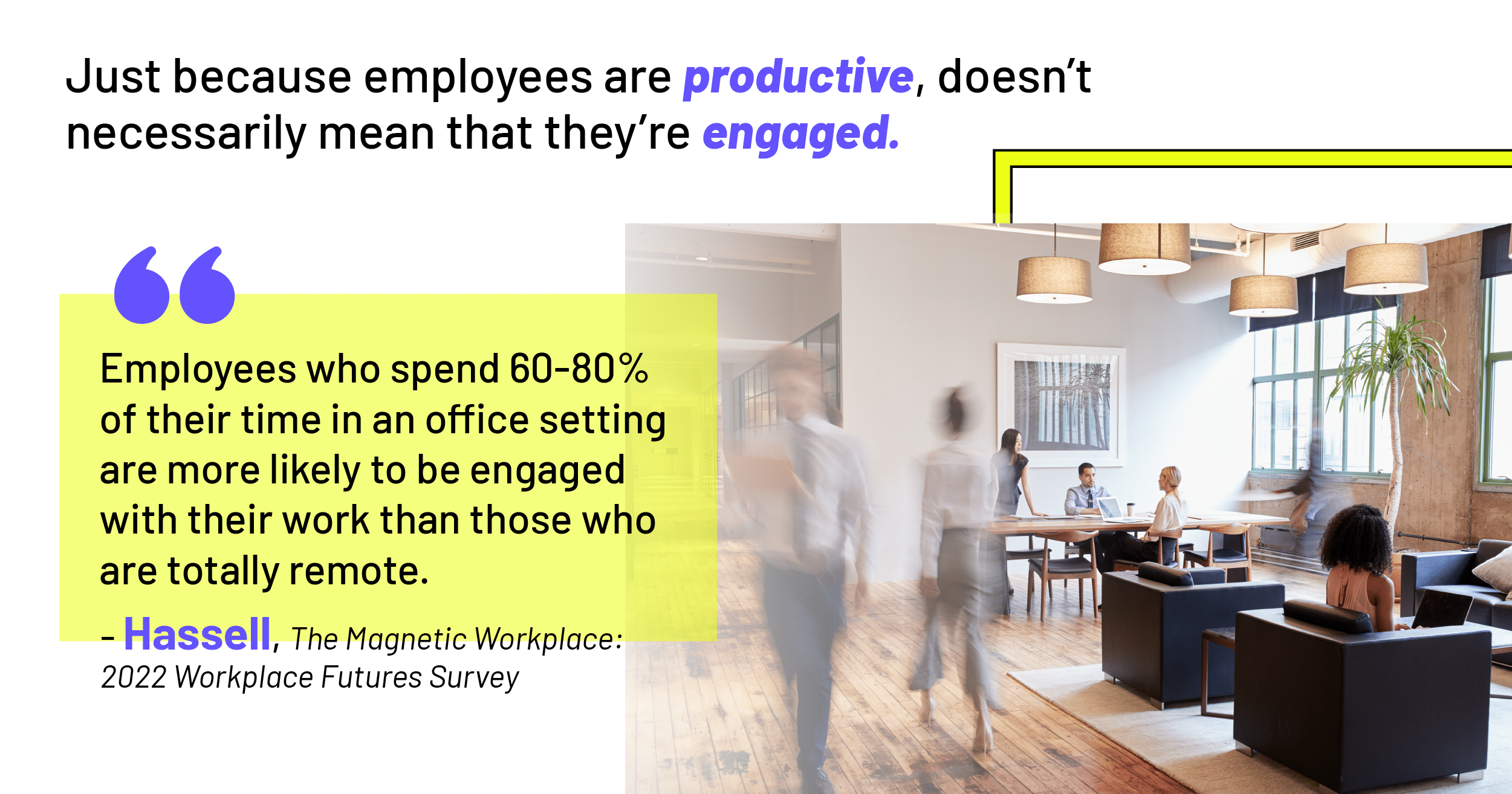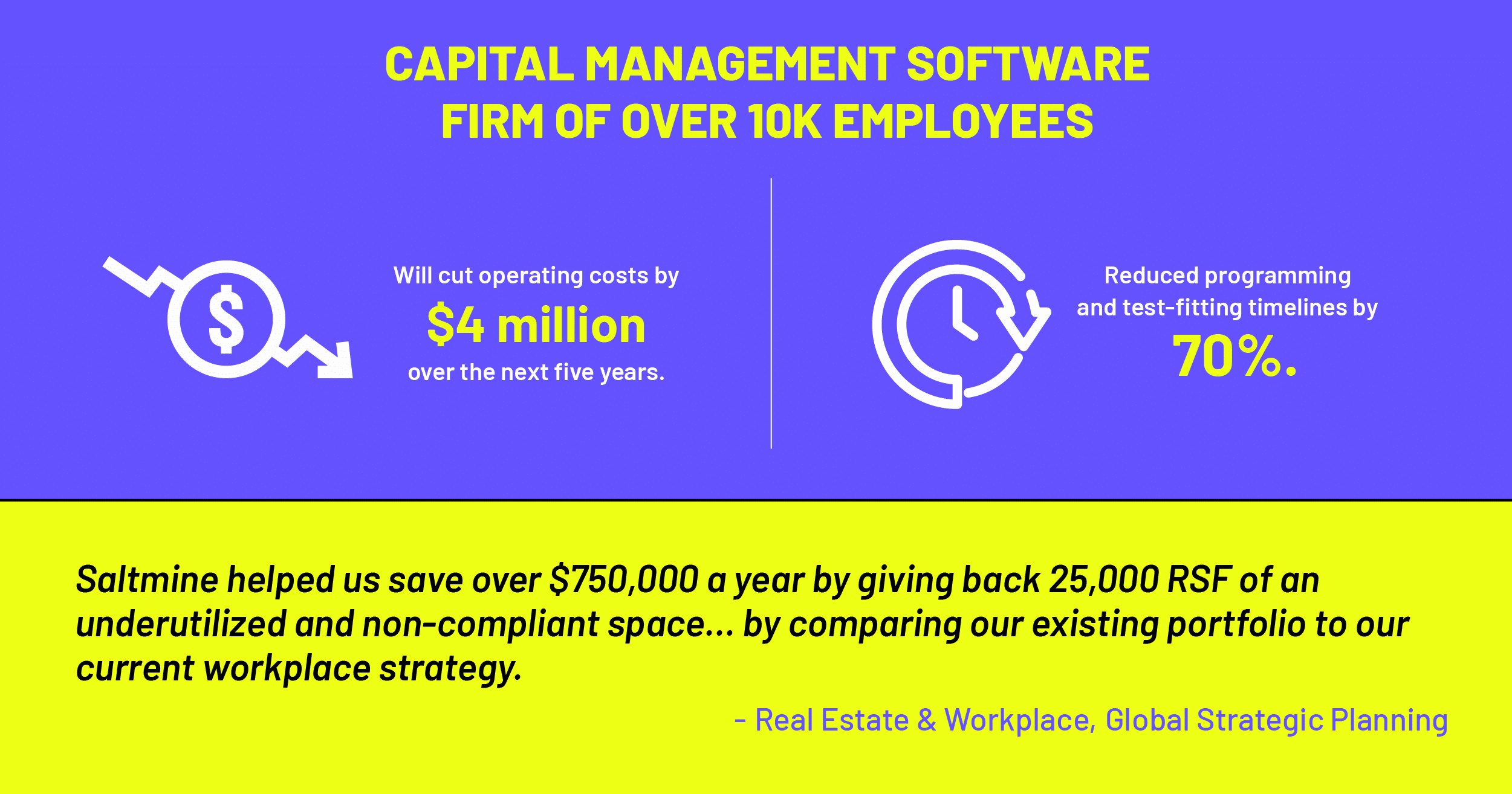To provide an engaging, people-centric office experience, you need to fully understand how your spaces are being utilized and measure how people are interacting with space on a granular level.
Disjointed, rigid processes
Here at Saltmine, if there is one thing we’ve learned from helping customers adapt their workspaces in a post-pandemic world, it is just how disjointed and rigid traditional workplace design and strategy processes are.
 From siloed data points to budget and timeline overruns, trying to apply traditional workplace strategies in our new and dynamic times is like trying to fit a square piece in a triangle hole. In short, it’s a mess–and the idea of achieving the workplace of the future is a mystery to many organizations and their workplace/RE teams. Here’s a quick snapshot of this workplace kerfuffle:
From siloed data points to budget and timeline overruns, trying to apply traditional workplace strategies in our new and dynamic times is like trying to fit a square piece in a triangle hole. In short, it’s a mess–and the idea of achieving the workplace of the future is a mystery to many organizations and their workplace/RE teams. Here’s a quick snapshot of this workplace kerfuffle:
77% of projects behind schedule
- From clunky ways to engage and align stakeholders to having to deal with project planning oversights that result in costly delays late in the process, workplace and real estate projects are historically lengthy.
68% of projects are over budget
- Many projects don’t have the necessary data points, up front, to make informed decisions which have costly implications and contribute to budget overruns.
90% of project data sits with 3rd parties
- Making informed decisions when it comes to space planning hinges on having as much data about employee behavior and actual utilization as possible. How can you expect to make decisions on how to evolve your workspaces for the future, if you’re only seeing 10% of utilization data?
This, on top of the rapid changes we’re seeing in our working cultures and habits as well as not knowing what will bring people back in, adds to the murkiness of this “great unknown.”
Why head back to the office?
Despite the ambiguity of what your future workplace should look like, the office and in-person spaces are still incredibly valuable.

While people can stay–and have stayed–productive working remotely, since the onset of the pandemic, there has been a decline in employee engagement when it comes to work. In a recent study of 2,500 workers from the US, UK, and APAC, “employees who spend 60-80% of their time in the office are more engaged than those who don’t.” With that being said, these engaged employees aren’t being mandated into office work. Many employees desire some form of office work but not at the expense of flexibility and autonomy–employees who are not allowed to choose where they work are more likely to resign en masse.
Providing an engaging office experience
Much of the workplace is underutilized and so much time and money is wasted on current means of space planning. This in addition to not having a complete understanding of how spaces are being used, causes workplace teams to struggle with planning engaging and people-centered office workplaces. Fully understanding your current real estate portfolio and measuring how employees are interacting with space on a granular level, is near impossible with the old workplace strategy and design playbook. Time and money are wasted on making the wrong decisions, using space inefficiently, and not having the spaces people need to do their best work–all while not understanding how people are actually using space. Providing an engaging office experience–all while streamlining capital projects–hinges on making sure you have all of your workplace data and architectural plans in one, unified place. Saltmine plug in 3, 2, 1…
In short, Saltmine enables workplace teams to:
- Plan space more efficiently
- Design and build faster
- Reduce project costs
- Maximize the employee workplace experience
- Make decisions with confidence
Here’s how
Customer story: Reducing times and saving almost half a million dollars
Company profile: International Banking Company Goal: To attract a distributed workforce–that was hired amidst the pandemic–to the workplace. Pain point: As Covid restrictions loosened, not knowing how to bring a highly distributed workforce back to the office for collaboration was a massive pain point. Many of the remote workers they hired amidst the pandemic were confused as to why they now needed to make long commutes back to brick and mortar offices, after working remotely for over two years. Solution: The company’s workplace and real estate team wanted to experiment with smaller, satellite offices–they wanted to increase the amount of options available and decrease the amount of wasted space. Currently, this customer is leveraging Saltmine to determine what teams and individuals would use satellite offices and how those numbers will affect headcount across the board–allowing them to:
- Drive engagement in the workplace by offering an enhanced employee experience and perception across all satellite offices.
- Gain a better understanding of how their office should evolve. By merging utilization data and employee feedback to the design process, the customer is able to make faster and more confident workplace decisions.
Outcome: On time and better project delivery, well below budget.
- Project timelines have been cut by over 7 months
- Project costs have been reduced by almost $400,000
Another customer who has experienced positive outcomes when leveraging Saltmine for their future workplace:

Free Download: Saltmine x Future of Workplace Fact Sheet
If this all resonates, we encourage you to click the image below and download our Fact Sheet that explores in more detail how Saltmine can help you achieve your future workplace goals. No form required–simply click the image and download the Fact Sheet, right now:
Enjoying our blog? Be sure to subscribe to stay up-to-date on Saltmine's original content with the form below!
 by
by 